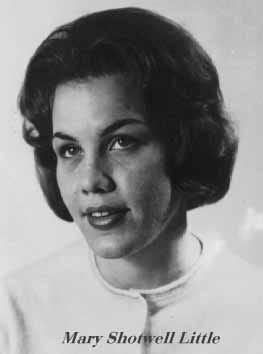
On October 14, 1965, Mary Shotwell Little, a twenty-five-year-old secretary at Citizens and Southern Bank in Atlanta, followed her usual weekday routine. She picked up groceries from the Colonial Market and met a coworker for dinner at the S&S Cafeteria in Lenox Square, located in Buckhead.
Her husband Roy was out of town for work but was due back the next day. They had plans for a dinner party that weekend. That night was the only time she had gone out while he was away.
Mary seemed upbeat, according to her coworker. After dinner and some window shopping, she said a cheerful goodbye around 8:00 p.m. and headed toward her Mercury Comet parked in the Yellow Lot, carrying her brown handbag.
She never made it home.
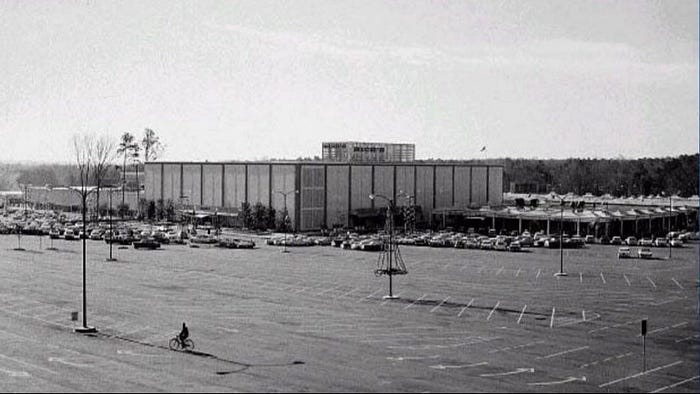
The next morning, her boss noticed she had not called or arrived at work, which was unusual for Mary. He called her apartment complex. The landlord said the newspaper was still on the front step. He entered the apartment and found it empty.
Concerned, the boss then contacted the coworker who had seen Mary last. With her help, he pinpointed Mary’s likely parking spot at Lenox and contacted mall security. That morning, they found no trace of her vehicle.
Later, around noon, Mary’s boss went to Lenox himself and found the Mercury Comet right where it was supposed to be.
But security had not ticketed it overnight, which meant it had left the lot at some point after 8:00 p.m. and returned later. This detail never led to a breakthrough because no one ever followed up with security records.
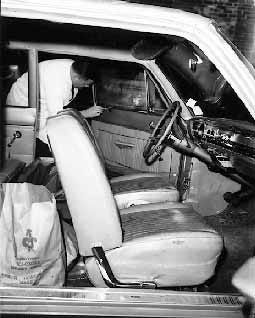
Inside the Car
Police found the car covered in red clay dust, typical of Georgia’s dirt roads. Her groceries were still in the car, along with soda bottles and a pack of Kent cigarettes—Mary’s brand. Grass blades were scattered around the interior. A slip, underwear, and girdle were neatly folded on the center console.
A bra and one stocking were on the floor. The stocking had been cut. Blood stained her underwear. None of her outer clothes were inside. Her sheath dress, white London Fog coat, handbag, keys, and jewelry were missing.
Blood smears marked the steering wheel, driver-side door, passenger-side window, and both front seats. A bloody fingerprint was found on the steering wheel, but no one could identify it. Police suspected the scene had been staged. The amount of blood seemed more consistent with a nosebleed, not a violent struggle.
Roy Little, Mary’s husband, returned from a work trip in LaGrange when he got the news. Mary’s friends did not like him much and had even skipped their wedding a few weeks earlier. He did not help his image with police either.
He refused two polygraph tests and seemed more interested in getting his car back from forensics than finding Mary. But he did keep meticulous mileage records, which helped detectives note the forty extra miles on the odometer.
The Sightings in North Carolina
On October 15, Mary’s credit card was used in Charlotte, her hometown. Twelve hours later, another charge was made in Raleigh. The receipts bore her married name and matched her handwriting. Both gas station attendants described a woman with minor head injuries and blood on her head and legs.
She was accompanied by unshaven middle-aged men who appeared to be in control. The woman never asked for help and kept her face turned away. The license plate on the car had been stolen days before her disappearance.
The twelve-hour gap between purchases was strange since the two cities were just a few hours apart. No one could explain the delay.
The Investigation Sprawls
A detective called local hospitals but none had admitted a woman matching Mary’s description. On October 17, Roy received a strange call from someone named Calvin Allen, who said he was praying for him and offered sympathy for his loss. Roy had never heard of him. At that point, Mary had only been missing for two days.
One of Mary’s old roommates said she sometimes stayed out all night. On October 18, police asked the media to encourage anyone living within twenty miles of Lenox Square to check their properties for clues—or a body.
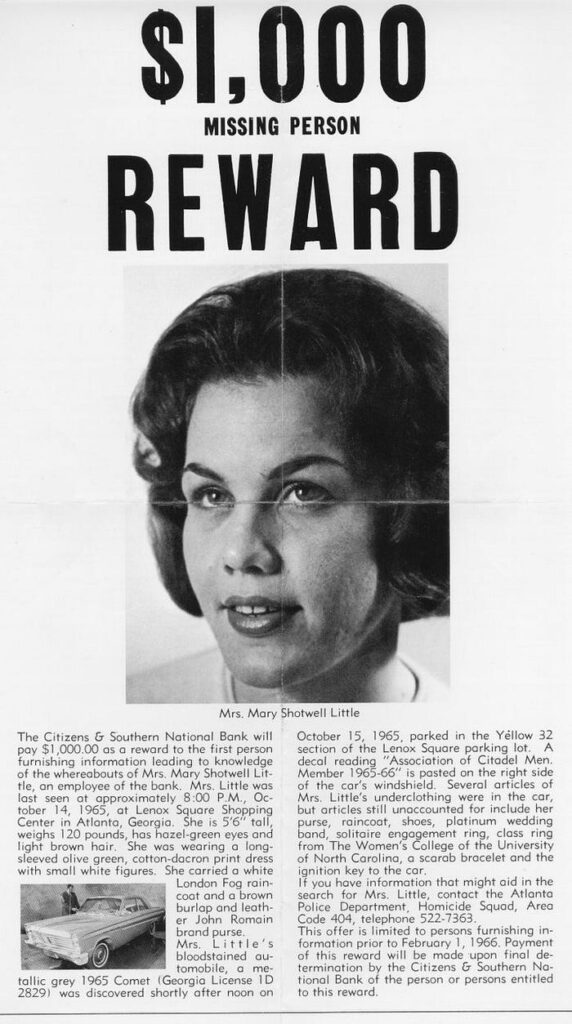
Roy behaved oddly. He bought Atlanta Falcons tickets for the upcoming season and called Rich’s Department Store to say he would not be responsible for Mary’s purchases. Detectives noted his priorities seemed strange.
Roy also mentioned a past encounter with a C&S employee who snubbed them in Chattanooga. Mary had said the man had been in trouble at the bank, but did not go into detail. Around the same time, Roy received a ransom call demanding $20,000. The caller never followed up. The FBI called it a hoax.
The Tire Trick
A woman who had been at Lenox the same night as Mary reported that a man approached her while she was getting into her car, warning her about a flat tire. She locked the doors and left.
At a service station down the road, mechanics confirmed her tires were fine. She estimated the interaction happened just before 8:00 p.m.—right when Mary said goodbye to her coworker.
Others said Mary had been getting disturbing phone calls at work. Once, she was overheard saying, “I’m a married woman now,” and “I can’t go there, but you can come to my house.”
She received five red roses that week. The flowers were delivered to her office from a florist in Decatur. Police tracked the florist, but the invoice vanished and no one remembered who delivered them.
On October 27, police spoke to the florist owner, who confirmed the purchase of red roses for Mary. The salesclerk only remembered that a white man bought them.
On October 28, someone left a note at a C&S Bank branch in Buckhead. It read: “Suggest you look for the missing woman in Dahlonega.”
Later that evening, a cook at the Royal Castle Restaurant on Buford Highway claimed he saw a woman resembling Mary arguing with a man in the restaurant. They stayed thirty minutes, then left.
Wild Leads and Dead Ends
A tipster called Cartersville police to say Mary’s body was dumped in a flooded quarry. The area was deep and dangerous, and divers had drowned there before. No search was successful.
Another anonymous letter claimed Mary was spotted in a Jacksonville, Florida law office. Supposedly, she married Roy to spite a trucker ex-boyfriend. Investigators called the lawyer listed. He had no memory of Mary or the visit.
On November 10, a woman in DeKalb County got a threatening call from a man with an accent. He claimed to have killed eleven women and knew details of her life. He warned that if she hung up, she would end up like “Mrs. Little.”
A day later, a woman told police her husband confessed to cutting up Mary on a picnic table near Lake Lanier and dumping her remains. The stains on the table were tested. They were not blood.
On November 15, a teacher said a man approached her in Rich’s Department Store and made strange remarks about murder. She identified him to police. He admitted being at Lenox Square on October 14, but denied involvement.
Police continued gathering evidence. They found that a stolen license plate used at the gas stations in North Carolina matched one taken from Charlotte on October 15. The FBI reviewed the credit card slips and Mary’s handwriting. They could not confirm nor rule out her signature.
The Georgia Crime Lab had opinions too. They believed Mary’s clothes had been rolled and placed neatly between the front seats. Her bra, found on the floor, had likely been pulled off but showed no blood.
Blood on the seats seemed to have been smeared deliberately. Blood on the undergarments appeared to have been added after they were folded.
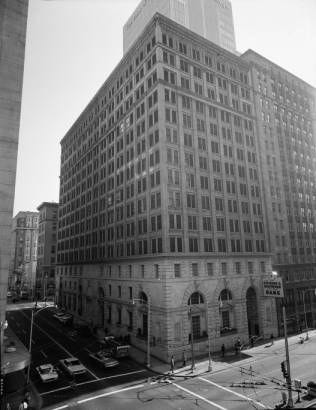
A Jailhouse Confession
In September 1966, inmate Larry Stargel reached out to authorities. Serving life for murder, he said he had information about Mary. He claimed that he and two others had committed burglaries near College Park.
One of the men, Jerry Mason, had once taken him to the Atlanta airport, pointed through a telescope, and said Mary’s body was buried near a construction site. Mason also showed him a credit card with her name on it.
Police contacted the FAA and visited the area Mason had indicated. An employee remembered a freshly dug hole from late November 1965. A rock now sat atop it. Excavation required clearance that was never pursued.
Stargel gave the FBI a 19-page statement but refused to sign it. He claimed he had withheld the truth earlier to avoid admitting his role.
His new story was detailed. He said on October 14, 1965, he joined Mason and another man to see a James Bond movie at Lenox. After the movie, Mason told him to stay behind. When Mason returned, he had a shopping bag and blood on his clothes. He needed to meet someone in Mount Holly.
On October 17, Stargel said Mason returned and showed him $5,000. He said the money came from a kidnapping and produced Mary’s credit card. She was still alive, he said.
Weeks later, Stargel joined Mason and another man on a trip to a house in the North Carolina woods. Inside, he saw a woman with bruises and a bandaged eye, tied at the hands and feet.
A few days later, they left the house with the woman. Stargel rode in the front while Mason drove. The woman and the other man were in back. Fifteen minutes into the drive, the man stabbed her with a long knife. She slumped to the floor. He covered her with a rug.
The FBI found the man Stargel named. He had been working a full shift on October 14 and a half-day on October 15. The timeline did not fit. Stargel’s story fell apart. He was never charged. Mason later served time in California for murdering two police officers in 1957. He died in prison in 2017.
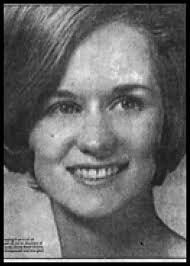
A Second Woman
That same year, Diane Shields arrived in Atlanta from Guntersville, Alabama. She had just gone through a breakup. A few weeks after Mary vanished, Diane started working at C&S Bank—at Mary’s former desk.
Diane moved into an apartment on Walker Avenue. One night, a man came to her door pretending to sell books. He knew she lived alone. She called police, but he was gone by the time they arrived.
By 1966, Diane had new roommates and a boyfriend. But she was unstable. After the relationship ended, she attempted suicide with sleeping pills but survived. She often disappeared without telling anyone and told coworkers she was investigating Mary’s case on her own.
In October 1966, Diane quit her job at C&S and started at a new company. On October 26, she received a box of five roses at her desk. She did not recognize the sender’s name.
A coworker said Diane eventually called police, who tracked the sender to a former C&S employee fired for inappropriate comments to female staff. He said he sent the flowers because he was thinking of her.
Diane soon moved again, rarely home due to dating a man named Tommy Antle. Then, in May 1967, she vanished.
Her body was found in her blue Chevy Impala, stuffed into the trunk outside a laundromat. Her mouth was gagged with a scarf and paper wad. There was no sign of robbery or sexual assault. Her ring was still on her finger.
Two women. Same bank. Same roses. Same silence.
No one was ever arrested. No one ever confessed. But Atlanta never forgot them.





